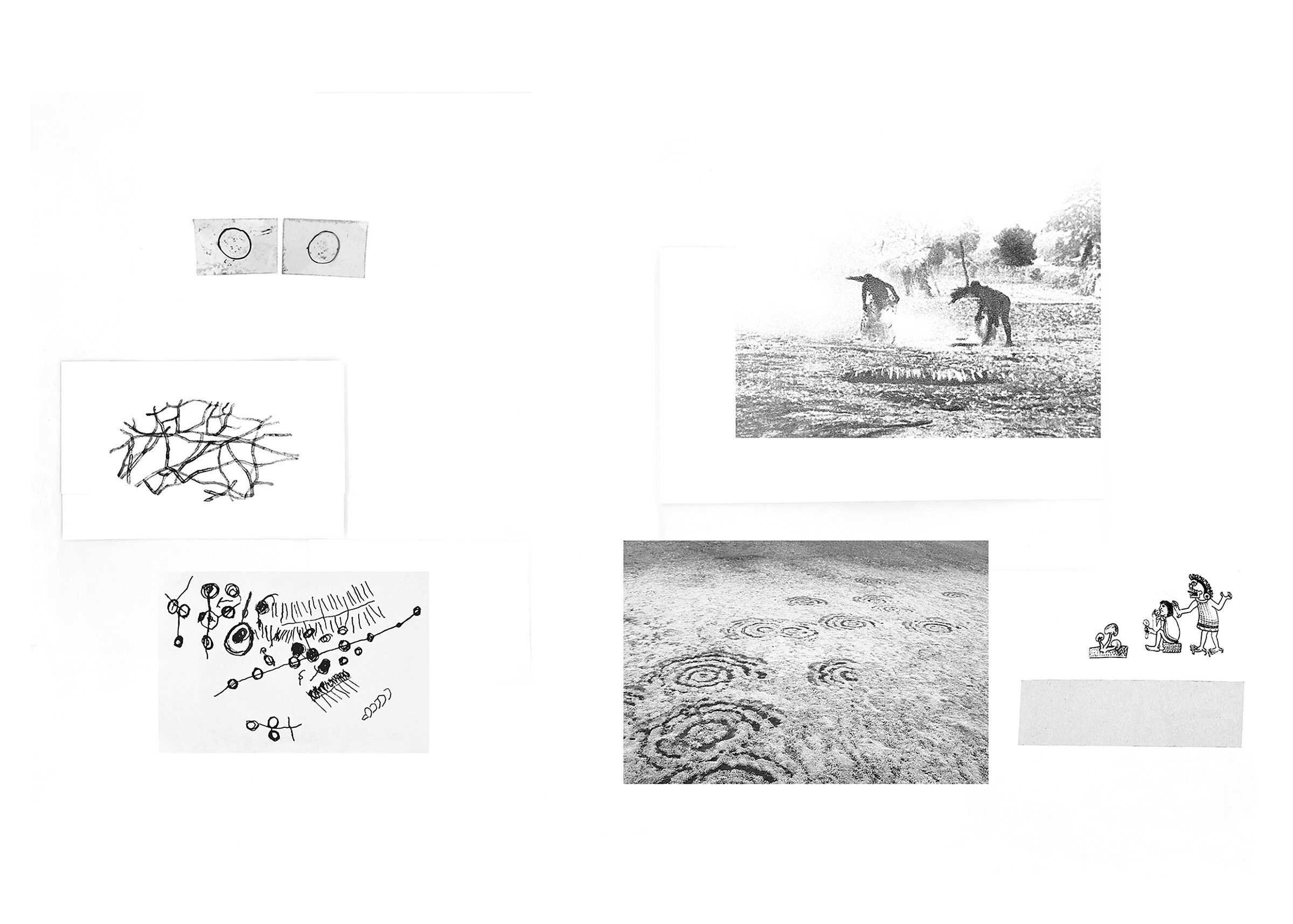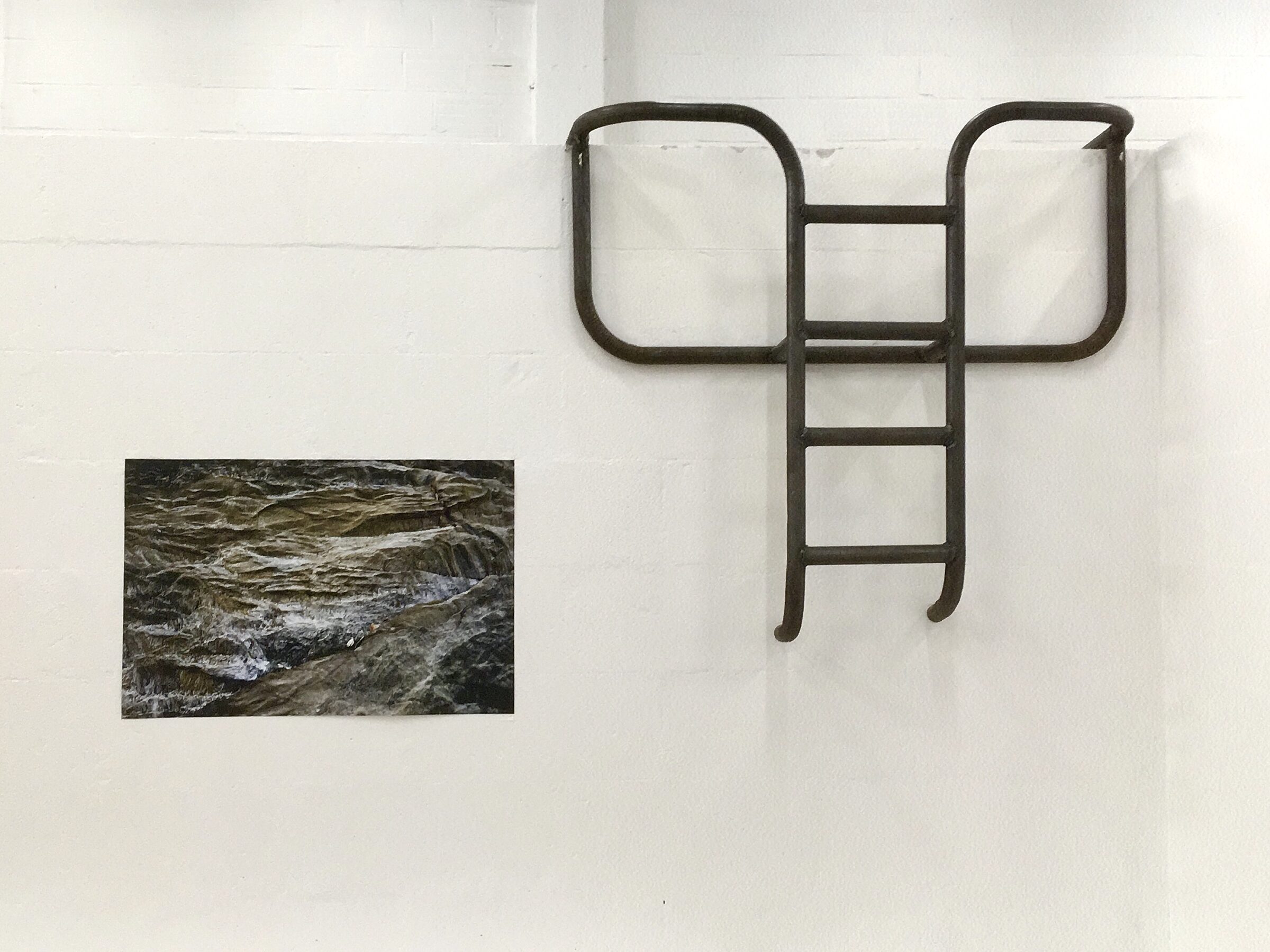17.02—05.03.2022
Interval: Chants / Champs de Guérison - Sophie Bellot, Laurie Dall'Ava & Lore Stessel

The Chants / Champs de Guérison exhibition arose from the dialogue between artists Lore Stessel, Laurie Dall’Ava and Sophie Bellot. The artists explore the concepts of well-being and healing in our contemporary society. They share the conviction that the advancing secularization of the West often ignores a person’s yearning for (ritual) connection. Healing is something one has to do here in the first instance alone, in a hospital, in one’s own home, in bed. Rest, medication and quarantine are key concepts; fate is somehow in your own hands. However, all over the world there are cultures that consider coming together, physical contact and rituals as an essential element of the recovery process. Lore, Laurie and Sophie each in their own way immersed themselves in different types of these ‘support systems’. Chants / Champs de Guérison is the poetic account of this research. Photography forms a common point of departure, but the artists explore various media such as glass, paper and textiles throughout the exhibition. The different documents come from completely different contexts, but resonate in their ambition to learn from communities that care for each other. The artists view the exhibition as a visual hymn that invites visitors to a moment of connection.
Sophie Bellot investigates new ways of inhabiting the earth and using it, considering it, working it. She observes the ‘land’ and its inhabitants over a long period of time, documenting microscopic and macroscopic cycles, patterns and changes. She carries out artistic experiments, that reveal information about the history of the place or impact its transformation in a non-intrusive way.
During the Chants / Champs de Guérison exhibition, Sophie Bellot presents the body of work Paysage de Confidance, an investigation into a plot of land belonging to a family of farmers, located on the Mediterranean coast. The family grows chrysanthemums and spirulina, two labour-intensive crops that require a lot of attention, but also return this attention later in the form of comfort (in the event of death) or resistance (as a ‘superfood’). In recent years, the family has also opened up the country to small-scale tourism, for people who need to recharge their batteries in the middle of nature. As a photographer, Sophie documents the crops that grow, the farmers that work it, the seasonal changes and the way the ‘tourists’ appropriate the landscape. The soil, which produces all crops and connects people with the earth, plays a leading role for Sophie: she captures different textures, colors and minerals in a poetic way. As a landscape architect she intervenes in a subtle way to promote the ‘coming together’ of people and nature on the plot and to optimize the beneficial exchange process. Sophie occupies the space with a series of photographs, texts from her log book Corps Habitant and a video.

Lore Stessel investigates the interface between photography, painting and movement. Not only in the working method but also as subject, the physical and the corporeal take an important position. The search for the human or animal body – and especially the tension with the environment – is a recurring subject in her practice.
Lore’s works, two textiles and a print, form a binding agent in the exhibition and guide the visitor around the space. Two of the images were shot in Mexico, where Lore immersed herself in the local habits and way of life of a group of dancers. Mexico gives way to an infinite amount of beliefs and rituals, peacefully united under the constant presence of the sun. Hands, an age-old fascination of the artist, play a central role in all works. To Lore, hands serve as a conductor of feelings, energy, strength, knowledge, but hands also figure in various rituals, which are recognizable by their own unique iconography: the reaching hand, the healing hand, the supporting hand, the connecting hand. In one work, one can see a body carrying another body, dancing, at the same time catching it and pushing it away into the air.

Laurie Dall’Ava explores consciousness and living bodies. Passionate about anthropology and biology, she is interested among others in chlorophyll and bees, but also in the cultures of the invisible as well as in the different forms of shamanism.
“Laurie Dall’Ava presents part of her Symbiosis. Documentation Anesthésie (2009−2022), an iconographic collection from which she regularly draws to create different iterations. She focusses on the notion of symbiosis, the intimate relationship initiated between two organisms, most often for their common benefit. The symbiosis disrupts classifications by documenting the inventiveness of living things. Laurie plays on this paradox by using a background of botanical boards, of which only a few organic traces remain, envelopes emptied of their content, micro-algae. From beginnings to what might become an end, she associates other images, transforming the original data to create a new web of meanings. The fabric of molecular imagery, shamanic sessions, plants and psychoactive fungi that the artist weaves echoes the mycorrhizal network, that gigantic carpet of mycelium between the roots of trees. The mysterious energies which weave their way through the invisible interstices thus construct imperceptible metamorphoses, making it possible to overcome and survive in other forms.” Text © Victor Maziere
Extraction V is a new mural, tailor-made for Cas-co spaces. The color used is emerald green, a pigment that Laurie has been researching for over 4 years. It is a mixture of two compounds: a semi-synthetic molecule derived from chlorophyll, and another molecule extracted from cyanobacteria, recrystallized and purified. Cyanobacteria are algae at the origin of life, since they produce enormous amounts of oxygen, which preceded human existence and will most surely survive it. Normally, this pigment is very unstable and fades in a few days, but Laurie worked together with Victor Mazière on a method to modify the molecules and extend their vital potential. It is about energy transformations and exchanges, which one almost has the impression of seeing in the bright green. The color refers to spring, when new processes are set in motion. This mural serves as a counterpoint in the exhibition, that simulates the viewer to meditate or relax for a while.

